ZHCSHS4 March 2018 TPS62243-Q1 , TPS62244-Q1
PRODUCTION DATA.
9.2.3 Application Curves
The conditions for below application curves are VIN = 3.0V, VOUT= 1.25V and the components listed in Table 2, unless otherwise noted.
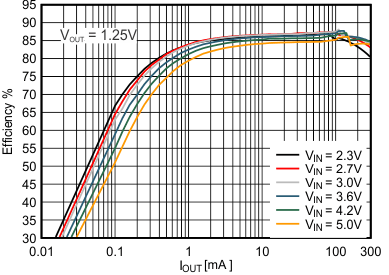 Figure 8. Efficiency vs Output Current, VOUT = 1.25V
Figure 8. Efficiency vs Output Current, VOUT = 1.25V
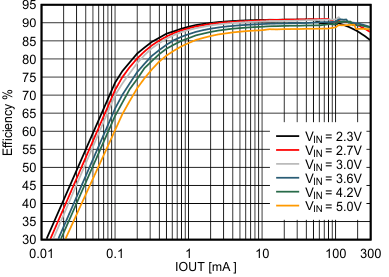
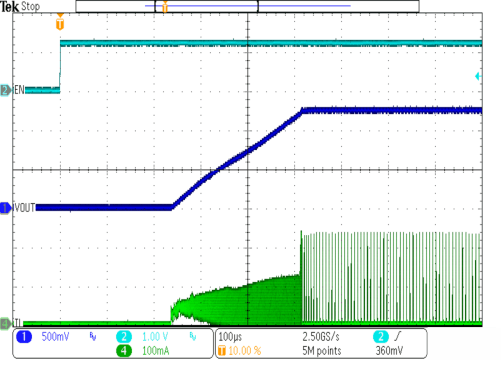
1.
Figure 12. Start-Up Timing
| VIN = 3V | RLoad = 100Ω | VOUT = 1.25V |
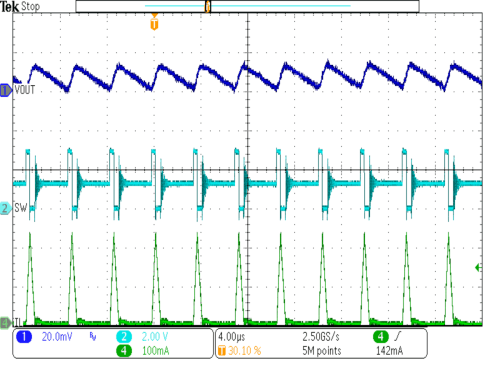
| VIN = 3V | IOUT = 25mA | VOUT = 1.25V |
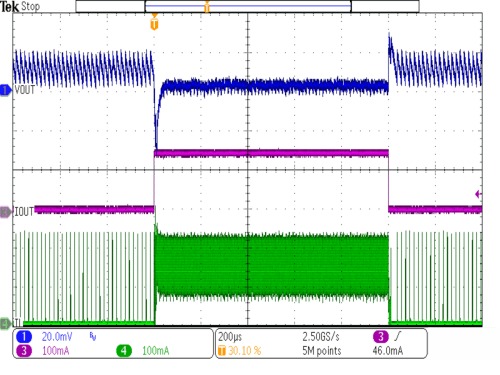
| VIN = 3V | IOUT = 5mA to 150mA to 5mA | VOUT = 1.25V |
| Rise / Fall Time 1µs |
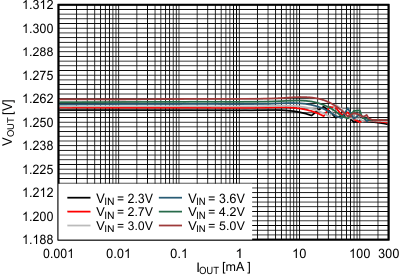 Figure 9. Output Voltage vs Output Current 1.25V VOUT
Figure 9. Output Voltage vs Output Current 1.25V VOUT
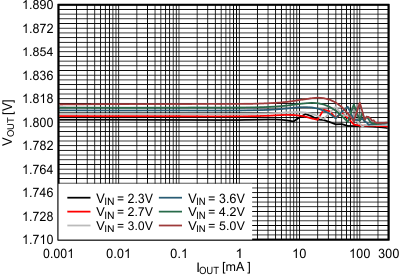
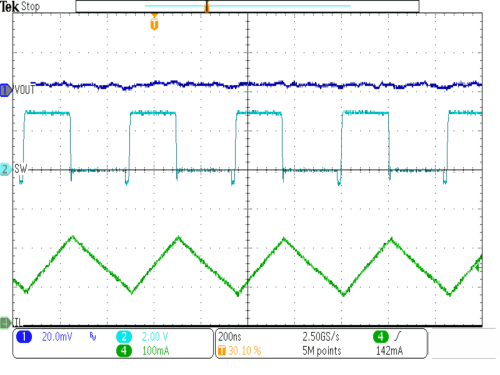
| VIN = 3V | IOUT = 150mA | VOUT = 1.25V |
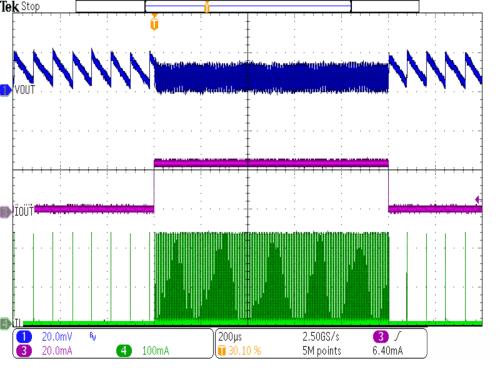
| VIN = 3V | IOUT = 1mA to 25mA to 1mA | VOUT = 1.25V |
| Rise / Fall Time 1µs | ||
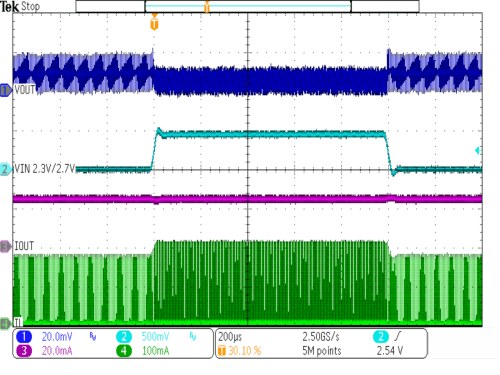
| VIN = 2.3V to 2.7V to 2.3V | IOUT = 25mA | VOUT = 1.25V |
| Rise / Fall Time 10µs |